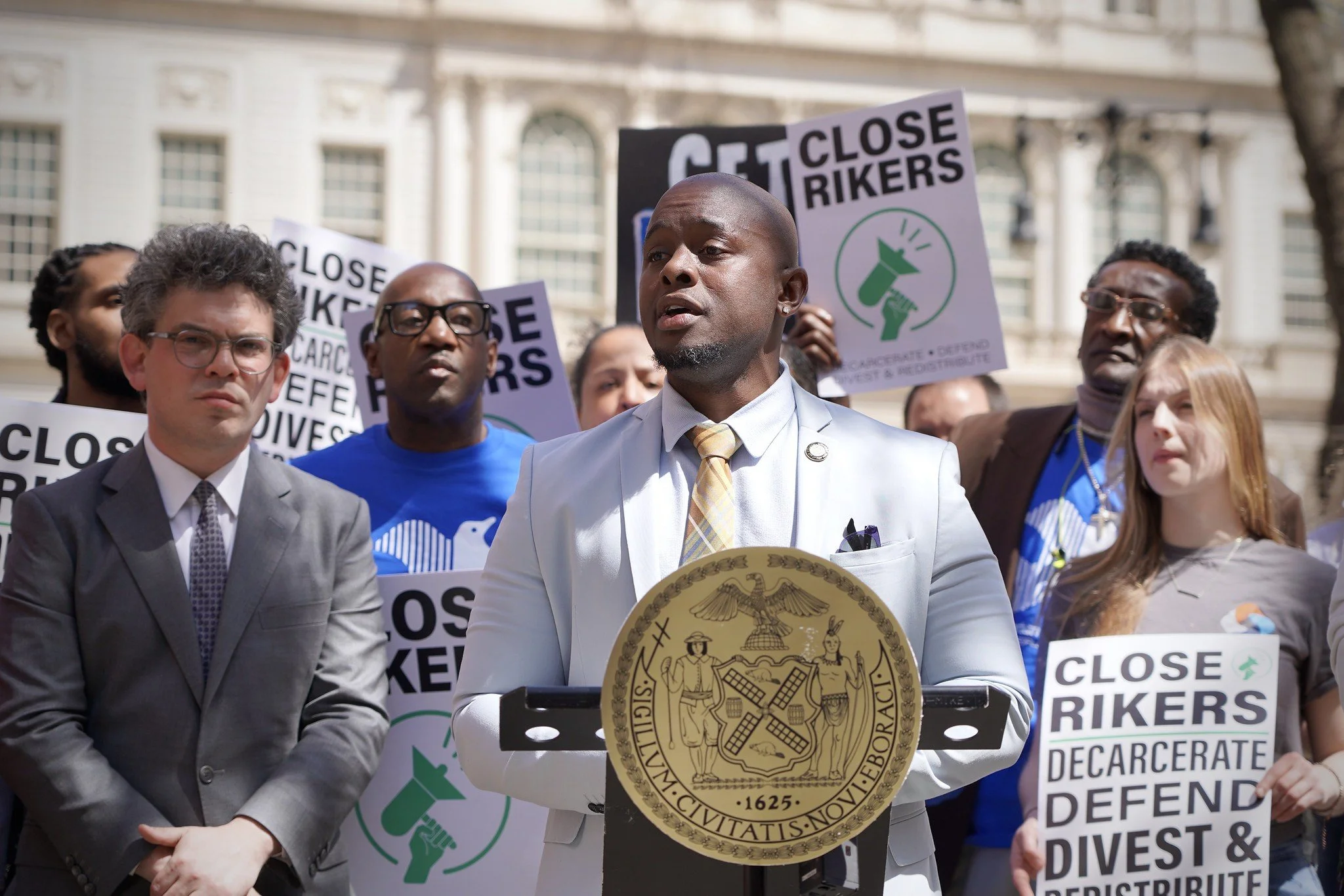Lawmakers pitch plan to lower Rikers population
/City Councilmembers Lincoln Restler and Kevin Riley proposed a plan to lower Rikers Island’s population on Tuesday, April 11, 2023. Photo by Gerardo Romo / NYC Council Media Unit
By Jacob Kaye
A group of city councilmembers introduced Tuesday a plan to lower Rikers Island’s population over the next several years ahead of its legally mandated closure in 2027.
The plan, which was put forth by Councilmembers Kevin Riley and Lincoln Restler, calls on the city and state to enact policies and fund programs that they say would directly impact the city’s jailed population.
Currently, there around 6,000 New Yorkers incarcerated on Rikers Island, nearly double the capacity the city’s four borough-based jails, which are set to replace Rikers by 2027, will be able to hold.
The plan comes as Mayor Eric Adams and members of his administration have questioned the city’s ability to close Rikers by the 2027 deadline, citing both the current population and the timetable for constructing the new jails, which will only be able to hold 3,300 detainees when fully constructed.
“Rikers Island has long been a humanitarian crisis, but the mistreatment of people in this infamous jail complex leaves New Yorkers in substantially worse shape than when they entered,” Restler said in a statement.
“Rather than taking steps to reduce the incarcerated population to facilitate implementation of the smaller borough based jails, the policies of the Adams Administration have increased mass incarceration in New York City,” he added. “We must focus on real solutions to safely and permanently decrease the number of people in jail and give struggling New Yorkers access to the services they need.”
The “Pathway to Ending Mass Incarceration in New York City” plan presented Tuesday lists three steps – and a number of items within those steps – to lower the jail’s population: “prioritize safely moving people off Rikers Island,” “expand access to housing” and “expedite case processing.”
Included in those steps are proposals to increase funding to the city’s supervised release program, expand the use of the city’s work release program, increase funding to the Justice Involved Supportive Housing, increase funding to public defenders’ offices, increase oversight of the Department of Correction’s ability to produce detainees to court appearances and speed up the appointment of Criminal Court judges.
“Closing Rikers is a foundational part in addressing the injustices of systemic racism in our criminal justice system — the mass incarceration of Black and Brown communities, the maltreatment of detainees and deplorable conditions of the facilities,” Riley said in a statement.
“Staying on track to close Rikers Island by 2027 involves a holistic approach to not only depopulate the complex, but also to reinvest and reinforce supportive resources and services to vulnerable New Yorkers,” he added. “I urge our City to adopt this comprehensive plan that seeks to make headway on the journey to end the long-lasting culture of abuse and to heal the wounds of our community.”
The City Council passed a law mandating the closure of Rikers in 2019. Also passed by the council was the borough-based jail program and plans to turn Rikers into a renewable energy hub.
Last year, the city began to miss a number of benchmarks along the path toward Rikers closure.
Population numbers increased for the first time in over a decade. As a result, the DOC failed to execute several transfers of land and facilities back to the city, which is required every six months by the city’s Renewable Rikers law.
In March, the Department of Design and Construction proposed a contract between the city and a construction firm for the building of Brooklyn’s borough-based jail, the first jail the city plans to complete. The details of the contract specified that it would run through 2029, two years after Rikers is mandated to close.
In recent months, Adams has said that he has formed a team to begin exploring a “plan b” in opposition to the city’s current plan to close Rikers.
“We have to have a plan B, because those who have created plan A, that I inherited, obviously didn't think about a plan B,” the mayor said in August. “If we don't drop down the prison population the way they thought we were, what do we do – no one answered that question.”




